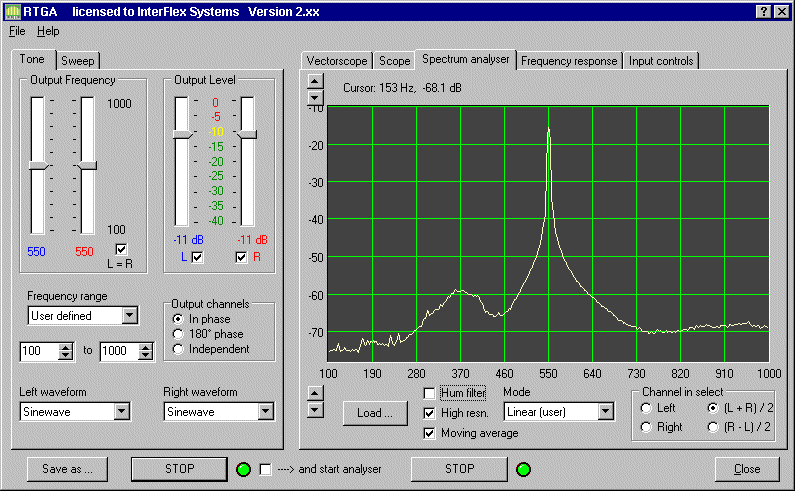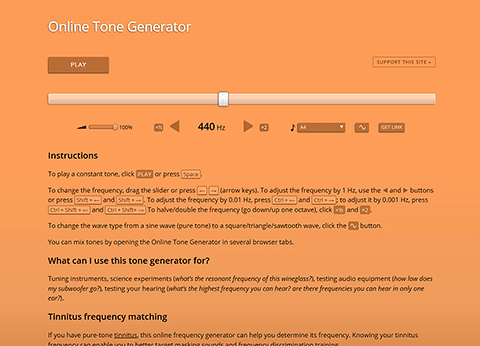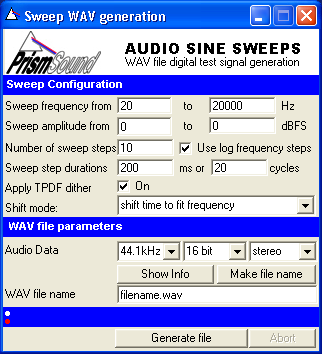

(At a samplerate of 96 kHz, the tone sweeps from 5 to 48000 Hz.) You can supply a (constant) level. With this method you create an exponential frequency sweep ranging from 5 Hz to half the samplerate of your choice. Be sure to fully document the reference tone(s) of your choice. This will allow for future fade-ins of background noise, and, more importantly, this is a safe margin for any copying effects that can occur due to the layers of tape being wound on top of each other. If you put one or more reference tones before a recording, make a 20 second silence between the tone and the program material. These values are standard frequencies for adjusting equalization, bias, levels, tape speed and azimuth on analogue tape recorders, but are still often used in the digital domain. Classic values for such a tone are 700 Hz, 1000 Hz, and 10000 Hz, all at -10 dB and lasting 10 seconds each.

A standard application for these tones is the reference tone that is often required preceding recorded material on tape or disk.
#Sine wave test tone generator application software
You can only see these marker when the soundfile is opened in editing software that recognizes markers. A marker is dropped at the start and the end of the resulting soundfile, listing the tone’s parameters. For the samplerate you should choose the rate of your digital program material. The tone will be invariable in both amplitude and frequency. We will now go through the three algorithms, their parameters and their applications one by one.įor this tone you need to choose a frequency, a level, a length and a samplerate. Since the starting phase of the generated sine is always 0, a fade in is not needed.

In general, test tones can help detect deficiencies in acoustical, recording, signal processing and wiring situations. There is a variety of situations where test signals come in handy, ranging from standard reference tones preceding recordings (with Make a Test Tone you can choose to introduce the specs of the testtone with spoken word), to measurement and adjustment of room acoustics.

In addition it drops markers in the sound files, indicating the exact frequency or amplitude at that spot. It calculates flexible, highly accurate signals that are saved to either AIFF and WAV (BWF) sound files up to 192 kHz. Make a Test Tone is a generator of sinusoidal audio test signals, and spoken phase checks for speaker configuration up to 10.2.


 0 kommentar(er)
0 kommentar(er)
